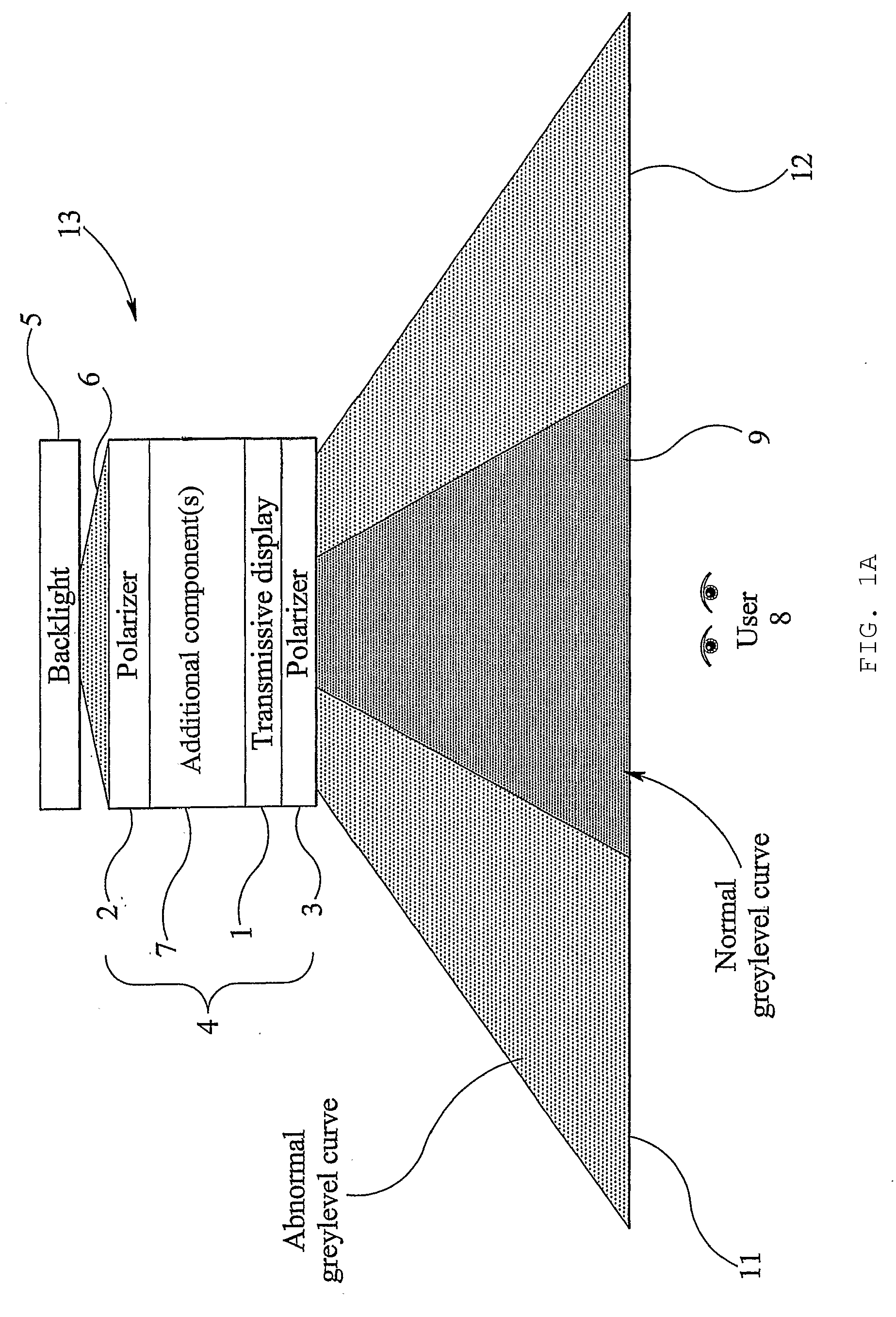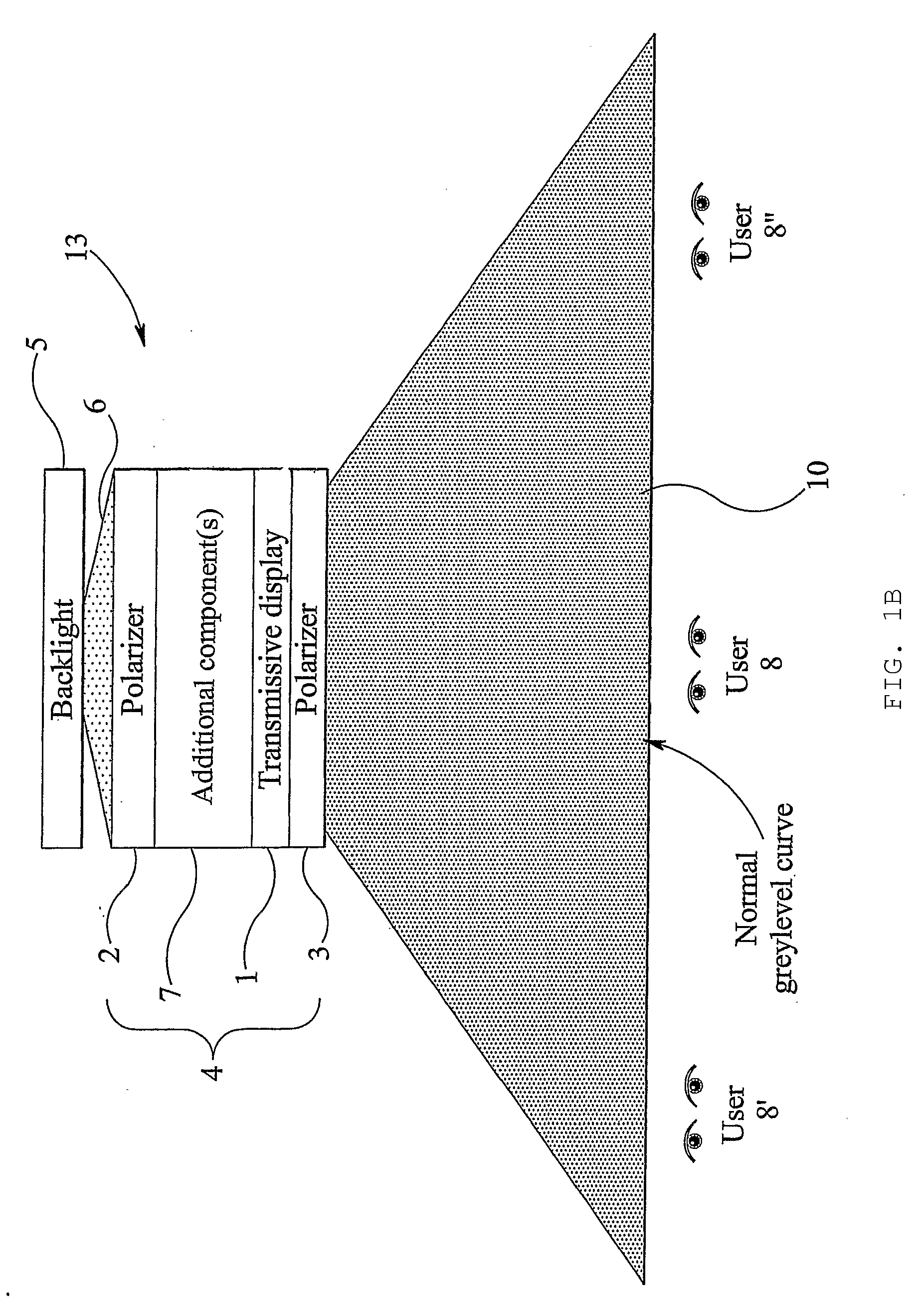Display
a technology of display and control film, applied in the field of display, can solve the problems of affecting the appearance of the display, and unable to enable the privacy function to be switched off in the prior art light control film, etc., and achieves the effects of simple electrode pattern, simple implementation, and easy manufacturing
- Summary
- Abstract
- Description
- Claims
- Application Information
AI Technical Summary
Benefits of technology
Problems solved by technology
Method used
Image
Examples
Embodiment Construction
[0085]FIG. 1A is a schematic plan sectional view of a display 13 according to a preferred embodiment of the present invention. The display preferably includes a transmissive image display layer 1 which can be driven to display a desired image. The image display layer 1 may be of a conventional type, which does not require any change in order to provide a display having a wide view mode and a narrow view mode. For example, the image display layer 1 may be a liquid crystal layer, and in particular may include a thin film transistor (TFT) liquid crystal panel that provides a pixelated full color or monochrome display in response to image data supplied to the display. However, any suitable display layer may be used.
[0086]The image display layer 1 is disposed between an entrance polarizer 2 and an exit polarizer 3. The polarizers 2, 3 and the image display layer 1 together constitute an image display device 4.
[0087]The display is illuminated by a backlight 5 which emits light with reason...
PUM
| Property | Measurement | Unit |
|---|---|---|
| viewing angle | aaaaa | aaaaa |
| voltage | aaaaa | aaaaa |
| voltage | aaaaa | aaaaa |
Abstract
Description
Claims
Application Information
 Login to View More
Login to View More - R&D
- Intellectual Property
- Life Sciences
- Materials
- Tech Scout
- Unparalleled Data Quality
- Higher Quality Content
- 60% Fewer Hallucinations
Browse by: Latest US Patents, China's latest patents, Technical Efficacy Thesaurus, Application Domain, Technology Topic, Popular Technical Reports.
© 2025 PatSnap. All rights reserved.Legal|Privacy policy|Modern Slavery Act Transparency Statement|Sitemap|About US| Contact US: help@patsnap.com



